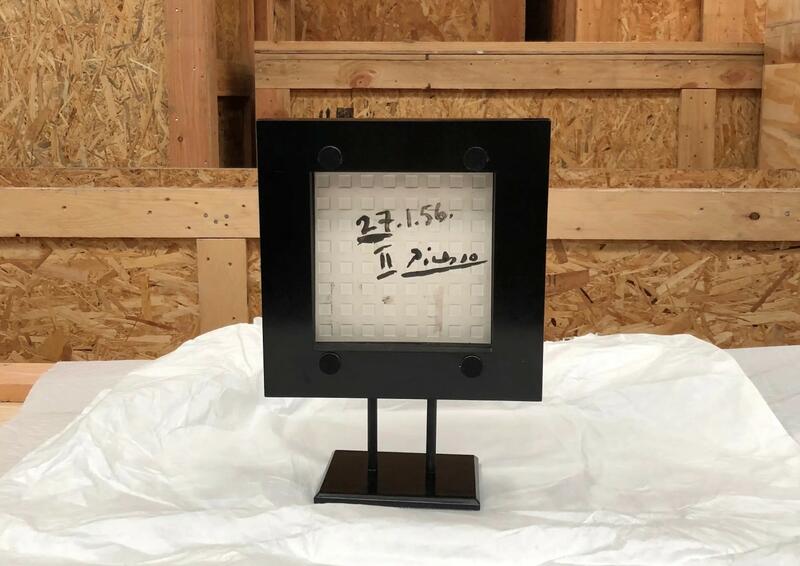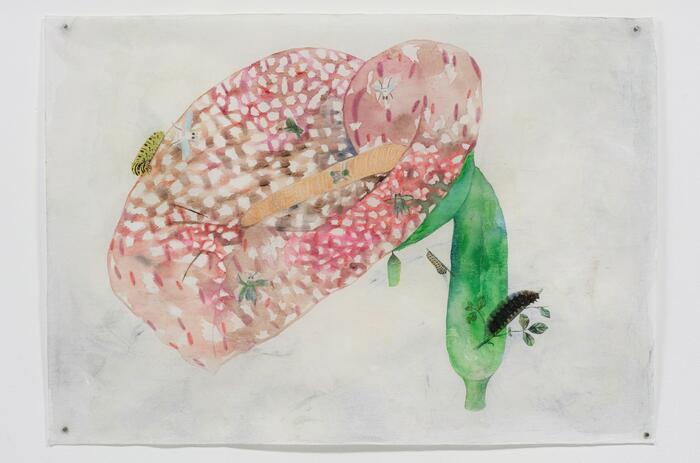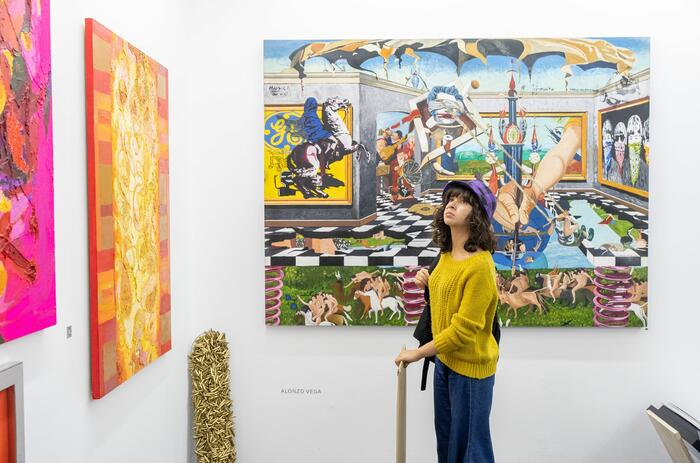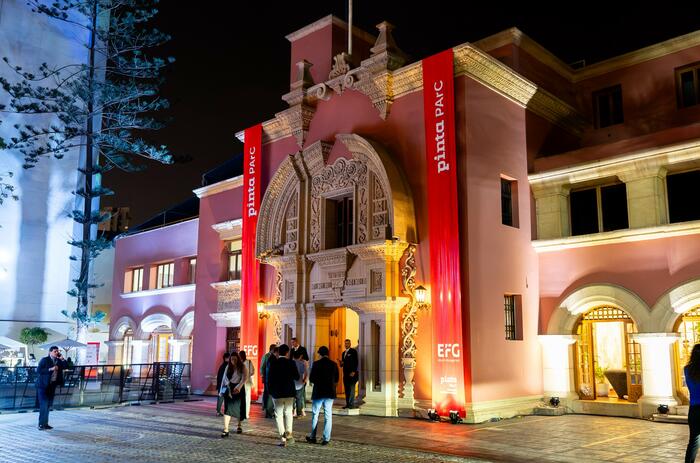CONVELIO: THE SMART INFRASTRUCTURE POWERING THE GLOBAL ART MARKET
Interview with Edouard Gouin, Co-founder of Convelio.

In the art world, attention is usually focused on record-breaking auctions, international fairs, or the discovery of emerging talent. Rarely does the spotlight fall on the infrastructure that makes all of this possible. Yet without specialized logistics, there would be no global market. No fairs, no biennials, no international collecting. Operating in this vital but often overlooked space is Convelio, a company that has, since its founding in 2017, revolutionized the transport of artworks by applying technological tools to a traditionally opaque and fragmented sector.
A Response to Frustration
"There were a series of problems we kept encountering: high prices, a lack of transparency, too many intermediaries," recalls Edouard Gouin. Both co-founders came from the tech world, but had previously worked with art-related businesses, where they noticed that the logistics experience was worlds apart from what one finds in e-commerce. That insight gave birth to Convelio: “The idea was to create a one-stop shop that included everything—pricing, transport, customs clearance, etc. It worked really well. The whole shipping side was how we got started.”
Gradual Expansion: Fleet and Warehouses
Over time, the company began to build its own logistics infrastructure. Today, the more than 160 employee company has its own fleet and storage facilities in Paris and London company has its own fleet and storage facilities in Paris and London. In New York—where it already operates actively—it currently partners with local providers, though its own warehouse and fleet are scheduled to launch in 2026. Currently, nearly half of its packing services are handled by internal teams. In markets where Convelio has no direct presence, it works with pre-vetted external operators. This hybrid structure enables the company to maintain high-quality standards, optimize costs, and ensure traceability for every shipment.
-
Convelio
When Artworks Don’t Fit on an Excel Sheet
Imagine you’re a curator or registrar managing a major private collection with pieces scattered across the globe. Some are stored in Paris, others on loan to an exhibition in New York, and several are still sitting in an artist’s studio in Mexico awaiting shipment. Your daily tasks involve coordinating acquisitions, approving institutional loans, and reviewing accumulating storage costs. But the information you need is scattered across Excel sheets, email threads, printed documents, and vendor systems that don’t talk to each other. There’s no single place to see what works you have, where they are, what agreements apply, or how much their upkeep is costing.
The scenario is equally complex for a registrar at a gallery participating in multiple fairs a year. Some works are in transit, others are on display at a booth, some are at the gallery, and others still with the artist. Add to this the last-minute shipments for exhibitions, returns, and the constant need to update availability and logistics costs. Without an integrated system, a single delay or mistake can jeopardize a sale—or a relationship.
Convelio’s inventory management software was designed to solve precisely these types of challenges. It centralizes all relevant information into one platform—even for works not under Convelio’s direct care. Thanks to its AI integration, the system can read data from various formats—including Excel and PDF documents—and translate them automatically into the client’s digital environment. This allows for a precise, real-time overview of inventory and the costs associated with each piece: storage, shipping, insurance, or other operational services.
-
Convelio
In a context where galleries and collectors are increasingly operating on an international scale, with constant flows of movement, loans, and exhibitions, having a tool that offers visibility, traceability, and control is no longer a luxury—it’s a basic operational need. Convelio isn’t trying to replace other systems but to complement them with a solution focused on precision, speed, and transparency. In a sector where efficiency is paramount and errors are unacceptable, tools like this not only save time—they reduce stress, risk… and last-minute panic.
Who Uses Convelio?
Currently, approximately 40% of Convelio’s clients are galleries, 30% are auction houses, 10% are decorators and interior designers, and the remaining share includes museums, collectors, and advisors. The inventory software—launched just a few months ago—has primarily been adopted by galleries seeking to cut costs and streamline operations. While the company’s core activity remains firmly anchored in shipping and storage—the foundation of its current business model—it has laid out an ambitious development roadmap, starting with the recent addition of its inventory software.
Experts in Navigating International Barriers
Beyond its operational strength, the company has earned a reputation for expertise in customs management—an area both critical and often opaque in the international art trade. Convelio has a small, highly specialized internal team that handles the most complex cases and jurisdictions with stricter regulations. In countries with more straightforward processes, a large part of the staff is trained to manage documentation directly, accelerating timelines and reducing friction.
-
Convelio
During recent debates over potential tariffs on cultural goods in the United States, Convelio was one of the few companies in the sector to offer clear and well-grounded explanations to its clients. As Edouard Gouin explains: “In the U.S., art is considered a form of expression and therefore protected by the First Amendment. That’s why it has historically been exempt from tariffs.”
This exemption is no coincidence. It was originally designed to protect the free exchange of ideas through cultural objects and to draw a clear distinction between commercial and cultural goods. While products created solely for economic purposes can be taxed, objects representing ideas, expression, or symbolic meaning must be protected under the principle of free speech. For this reason, artworks have traditionally remained outside the reach of tariff measures—except in special circumstances. These exceptions include transfers linked to terrorism, tax evasion, or other threats to national security. In such cases, protection is suspended, and the object may be treated as a taxable commercial good.
Yet the line between the cultural and the commercial is not always clear. This is exactly where complications arise, especially with design or decorative art pieces—like those by Lalanne or Pierre Paulin—that are not always classified as artworks under U.S. customs criteria, leading to surprises in both tax and shipping treatment.
This combination of process transparency, technical expertise, and adaptability has made Convelio a trusted partner for those navigating the international art market. In an environment where regulatory shifts can occur unexpectedly, having an ally who understands the intricacies of cross-border logistics makes all the difference.
Art Needs Infrastructure Too
Convelio is helping to redefine what we mean by “cultural infrastructure.” It’s not just museums, fairs, or biennials, but also the invisible systems that allow works to travel, be preserved, and reach their destination in optimal condition. In Gouin’s words: “We’re building an ecosystem of services that combines shipping, storage, operations, and customs—all designed to make life easier for registrars and art logistics teams.”
More than just a logistics operator, Convelio positions itself as a key component in the global circulation of art. Its work—often quiet but essential—supports the very structure that sustains much of today’s dynamic cultural market. Along these lines, the Art Operations Talent Report 2024, published by Convelio in collaboration with SML, highlights the strategic role played by registrars and operations teams—professionals who have long remained in the background despite being crucial to the functioning of the art ecosystem.











